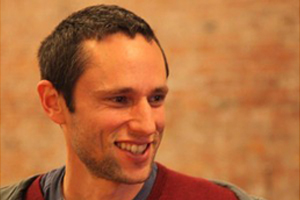Big time sports has become the ‘bread and circuses’ of our
time. ‘
Bread and Circuses’ was a phrase originating in Roman times by Juvenal
who saw Roman citizens becoming concerned only with those two issues in life.
The circuses referred to were games held to entertain the public, including
gladiators and chariot races.
Wikipedia suggests, “Juvenal here makes reference
to the Roman practice of providing free wheat to Roman citizens as well as
costly circus games and other forms of entertainment as a means of gaining
political power.”
There are several concerns I have with the growth of big
time sports in our age:
1) The
outrageous incomes generated for a very few drawn from the pockets of the many
plays a pivotal role in our distraction and diversion from issues of war,
poverty, injustice and ecological destabilization. It also exacerbates the
inequality that so harms our social fabric.

In the U.S.
especially, the number of people entranced with professional sports is
astounding. The NFL had 33 million attendees this year spending an average of
$82 per ticket (not including parking, hot dogs or beer). The NBA had 21
million ticket purchasers at an average price of $51, the MLB 74 million at an average
ticket price of $40, and the NHL 12 million with a $66 ticket average. Those
totals add up to 140 million attendees and somewhere in the neighborhood of
$7.4 billion of revenue.
But big time college sports is not far behind. The NCAA
Football Bowl Subdivision schools had 32 million attendees, where low-demand
game ticket prices averaged more than $37 while high-demand game tickets
averaged $61. Twenty million fans attended regular season NCAA basketball games
last year among the top ten conference teams.
A recent map
(
courtesy of WTHR-TV) of the highest paid public employees by
state showed that in 41 out of 50 states the highest paid public employee was a
college football, basketball, or hockey coach.
Add the astronomical salaries of
professional athletes, not to mention the franchise owners, and we see a huge
transfer of wealth. One of the teams I rooted for as a child was the
Detroit
Tigers.
In those years, the star and future Hall of Fame member was
Al Kaline,
who played his entire 22-year career with Detroit and made all of $100,000 in
his final year (1972).
Fast forward to this past year when Tiger pitcher Justin
Verlander signed a seven-year contract earning him $180 million. This averages
out to more than $25 million a year or 250
times what Al Kaline ever made in a single year. Is it any wonder that
low income citizens are unable to afford attending these events?
Advertisers paid more than $1,000,000 for a 30-second
commercial slot for the major sports events last year ($3.5 million for the
Super Bowl).
2) Time
associated with watching big time sports.
The transfer of wealth is just one concern.
Another, and perhaps more damaging, is the
circus effect: the distraction and diversion of attention away from our
pressing challenges and a willingness to engage in finding solutions to them.
More people watch NFL football
than vote in our bi-annual Congressional
elections, let alone write letters or otherwise communicate with governing
officials regarding their concerns.
While actual game attendance has been healthy for years for
both professional and major college sport teams, the attention paid through TV
is perhaps at least as telling. A
2011 Harris poll showed that 60% of all
adults watch NFL football with 27% watching six to ten hours per week. A
Scarborough Research survey found 76 million college football viewers in 2012
and at least 58 million college basketball viewers.
The chasing of hot prospects for college rosters keeps targeting
younger and younger athletes, with high school freshmen and sophomores tracked
for years before they are allowed to “sign” a commitment letter. Actually,
youth travel teams in all these sports now have primary school age children
spending weekends traversing hundreds of miles to play other kids, with hopes
that someday they will be one of those lucky few who star on the big stage.
What this does to our society, let alone what it does for our carbon emissions,
is tragic.
Our newspapers, with rare exception, have as much if not
more staff covering sports than they do covering local government or the
community and certainly give more ink to that arena than any other. Similarly,
local TV news allots about as much time for sports coverage as it does all the
other news they broadcast.
It should hardly surprise us that so many of the American
people seem so uninformed on so many of the issues facing us as a human family
on a finite planet. Likewise, even the college campuses where big time sports
dominate the campus culture, seem largely inoculated against serious
involvement with world beyond them outside of the classroom. We spend relatively little time trying to
understand, let alone act, to improve our communities and societies compared to
the attention we give to sports.
3) Winning is everything
But perhaps my greatest concern with this infatuation with
big time sports is the pernicious effect of casting much of our social lives in
terms of competition – making winners and losers and basking in the winning.
This emphasis on “winning is everything” has become increasingly characteristic
of our political, business, and educational cultures, casting others as
opponents to be defeated. You see it in the growth of American Exceptionalism –
a myth that by
all measures we might be better than others and
therefore worthy of emulation if not adoration
. The Spirit Level ( by British epidemiologists Pickett and
Wilkinson) alone debunks that myth on so many fronts.

I am a sports lover, despite the paragraphs you’ve read
until now. I still remember the Pee Wee Reese mitt my parents bought me when I
was five. And we played ball every day in the summer, football in the fall, and
hockey in the winter. Mostly we did pick-up: from whomever showed up, we got
two volunteer captains for the day and they would alternate choosing amongst us
until all were selected. We even played with unequal numbers so that everyone
could play. I lived and breathed sports, listening to the Tigers, Lions,
Pistons, and Red Wings as I’d fall asleep at night. I played high school hockey
and some organized fast-pitch softball and baseball when I was younger. As an
adult I played softball (four nights a week some years before marriage) and
even played nine years in an Over 50 league. I also coached my kids in softball
and soccer when they were young. Sports are a good thing. They can teach us
team work, skill development, a work ethic, and keep us physically active late
into life.
But the capturing of sports and making it the circus it has
become, distracting us from attending to social and environmental challenges,
is dividing us into camps. When the main challenges we face are global in
nature – climate and ecological destabilization, inequality, infectious
disease, etc. - we need to act as one team, one family, working together, not
trying to see who can beat the other and win some shallow victory.
Instead of waiting for yet more sanctioned and officially
organized teams and leagues, it’s time for us to get out on the fields and get
started with some good old pick-up games, where everybody plays and everybody
wins. Like it or not, we’re all in this together.










